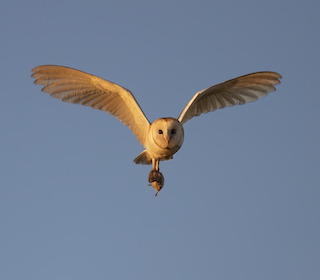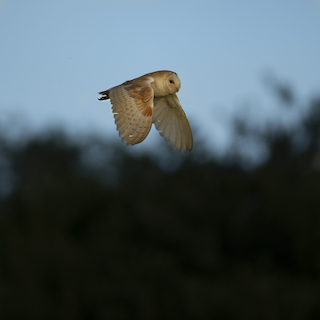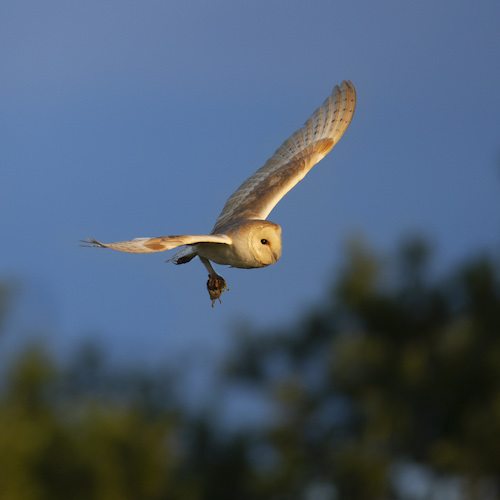
Also known as the Ghost Owl, this nocturnal bird of prey can sometimes be seen hunting during the day. An early evening or dusk walk through the National Trust’s Penrose estate or Windmill Farm may well be accompanied by a Barn Owl’s screeching, or perhaps even a glimpse of its ghostly flight.
Photo: © Richard Birchett
Scientific name: Tyto alba
Other common names: Western (or Common) Barn Owl, Ghost Owl, Church Owl, Demon Owl
Conservation status: UK conservation status, Green
What to look for:
• Colouring and appearance: Pure white breast and underside feathers; buff and silvery-coloured back; white, heart-shaped face; black eyes.
• Size: Wingspan 80 to 95 cm, length, 33 to 39 cm.
• Where: Farmland, grassland, heathlands, woodland edges; widespread across the UK, but absent from the Scottish Highlands.
• Call: Shrieks and hissing

With a face like a heart and those fluffy, creamy feathers, you’d be forgiven for thinking butter wouldn’t melt in the beak of this beautiful and much-admired owl. However, our iconic Barn Owl is, of course, a fearsome predator, gliding on silent wings through the night as it hunts for small mammals and birds.
That heart-like facial disc isn’t just for show – the shape enables this nocturnal owl to detect the high-frequency noises made by its prey by directing the sounds, and so find the unlucky creatures more easily in the dark of night. This acute hearing is further enhanced by the asymmetric placing of its ears, making working out the position and distance of its prey even more accurate. They may not need their keen eyesight to hunt, but Barn Owls are also sometimes seen during daylight hours, so don’t be surprised to see one flying low over the fields, or perched on a gatepost patiently waiting for its next meal.

Barn Owls nest in tree or cliff cavities, and, of course, barns and other old buildings. In the climate of the British Isles, farm and church buildings are definitely the first choice, as they provide better protection for the young from our varied and often wet weather. They will also happily use nesting boxes. The female does not make a nest as such but, during incubation, she retains her regurgitated pellets – which are dry and furry – and shreds them to build up bedding material. She lays an average of five eggs, and is fed by the male for the 30-day incubation period. The chicks take nine weeks to fledge, and continue to be fed by both parents until they are about thirteen weeks old.
Did you know…?
…There are 30 subspecies of Barn Owl in the world, and it is globally the most widely distributed owl species.
More information and references:
Svensson, L., Mullarney, K., Zetterstrom, D.,1986. Collins Bird Guide, second edition (translated by Christie, D., Svensson, L.). HarperCollins, London.
Published: July 2018 (images updated July 2020)
Author: Amanda Scott
Photos: © Richard Birchett (website; YouTube Barn Owl vlog)

